1lumen selects and reviews products personally. We may earn affiliate commissions through our links, which help support our testing.
Amutorch E3H review
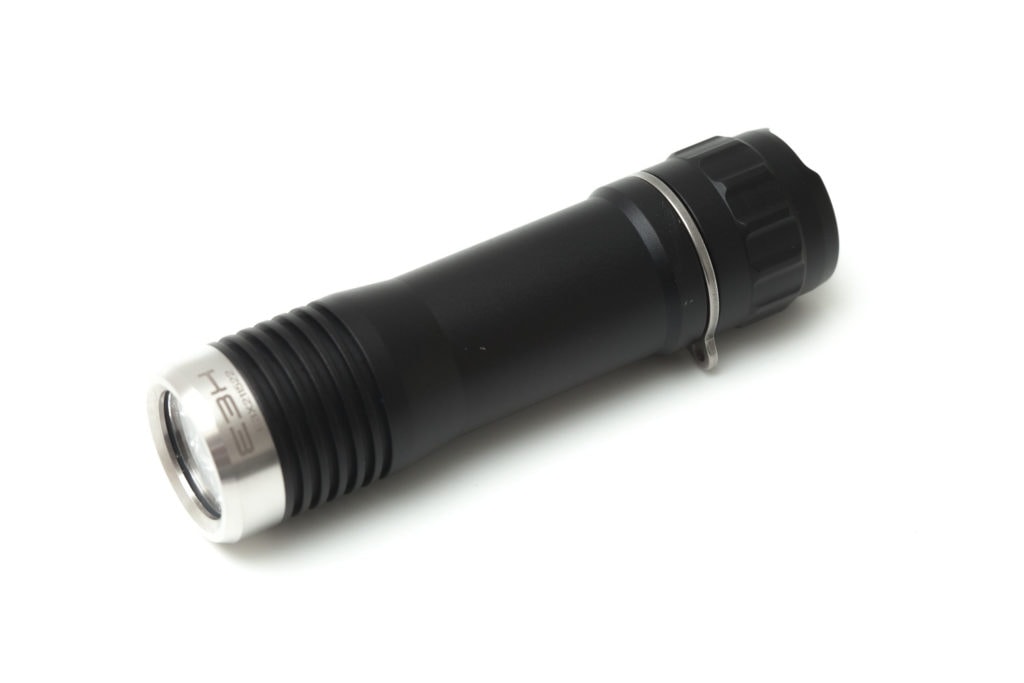
Amutorch E3H specifications
| Brand/model | Amutorch E3H |
|---|---|
| Category | EDC flashlight |
| LED | 3*Luminus 6500K SST20 (mine) |
| Lumens | 3,000 lm |
| Beam intensity | / 253 meters |
| Battery config. | 1*21700 |
| Material | Aluminum |
| Modes | 1-4 (you can choose), default 2 |
| Blinkies | Strobe (hidden) |
| Reflector | TIR |
| Waterproof | IPX8 |
| Price: | Between $35 and $50 |
| Review date | June 2021 |
Introduction:
So far, we’ve only reviewed a couple of Amutorch flashlights, but that doesn’t mean Amutorch isn’t expanding its lineup. We just received 3 flashlights for review, the E3Q, E3H and the E4. All three use a similar UI, so that makes it easier to test and compare.
This review is about the Amutorch E3H, an EDC flashlight with 3,000 lumens. It looks exactly the same as the E3Q, but only larger. The UI and everything is the same, but there is a noticeable difference in output and especially in runtime. A 20350 1400mAh will have much shorter runtime than a 21700mAh battery.
Package quality.
Starting with the packaging, all three of the Amutorch flashlights I received were sent in a simple brown carton box. Inside the box is the following:
- The Amutorch E3H
- 1 spare o-ring
- 21700 battery (optional)
- Amutorch A1 lithium-ion charger (optional)
That’s not a whole lot, but sufficient to get started. One thing I did miss is a normal English manual, just like with the other 2 Amutorch lights I received. Even without it, the UI is quite easy to decipher.
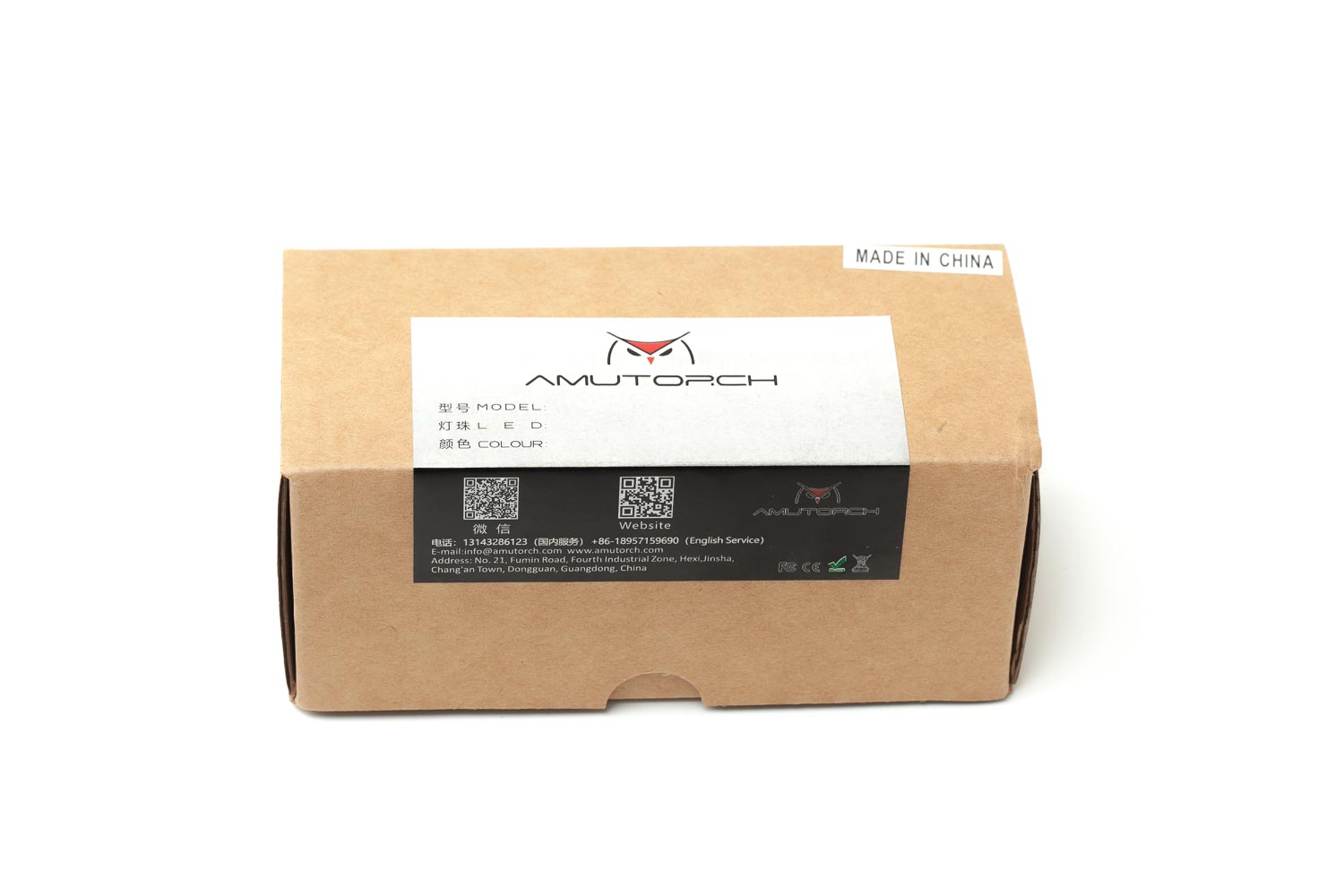

Flashlight in use
The Amutorch E3H uses a simple reverse-clicky switch. This means that you have to fully press (and hear the click) to turn the light on. And because of this, there is no momentary mode. There’s no problem with the switch and it works as expectedIt doesn’t feel mushy or cheap.
The light itself is actually very compact for a 21700 flashlight, and might even be one of the most compact 21700 lights currently on the market. There’s no knurling on the body, nor on the head, but the head has some heat fins. There is also no lanyard attachment on the body, but ti does have a lanyard ring with a small loop.
Since the body has no knurling it could become a little slippery in certain circumstances. I’m thinking about cold hands in winter for example.
Tailstanding is no problem.
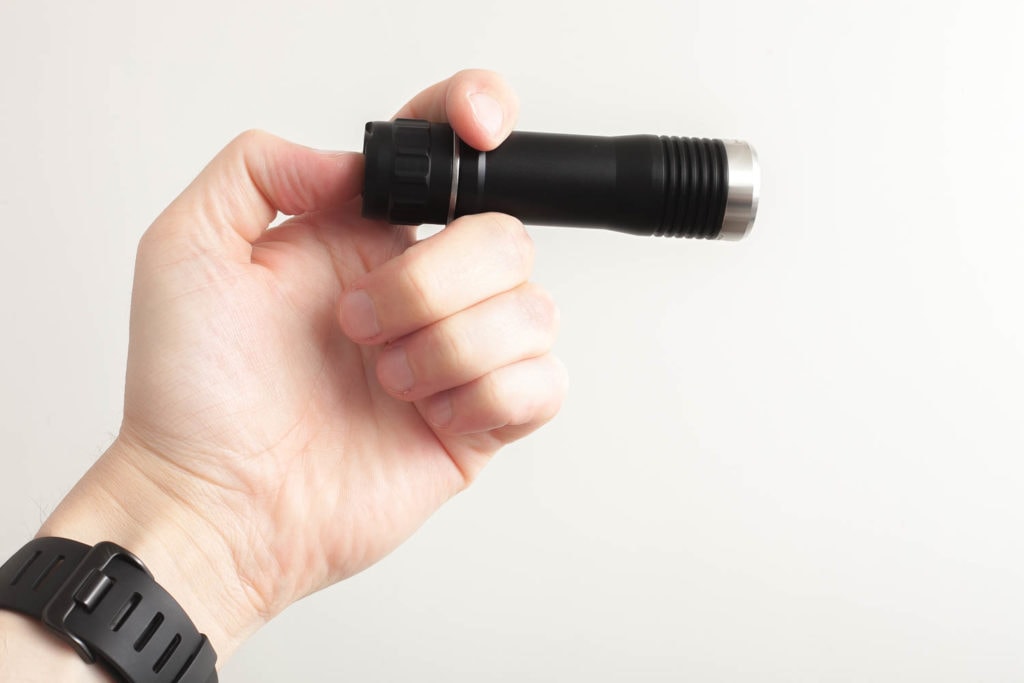
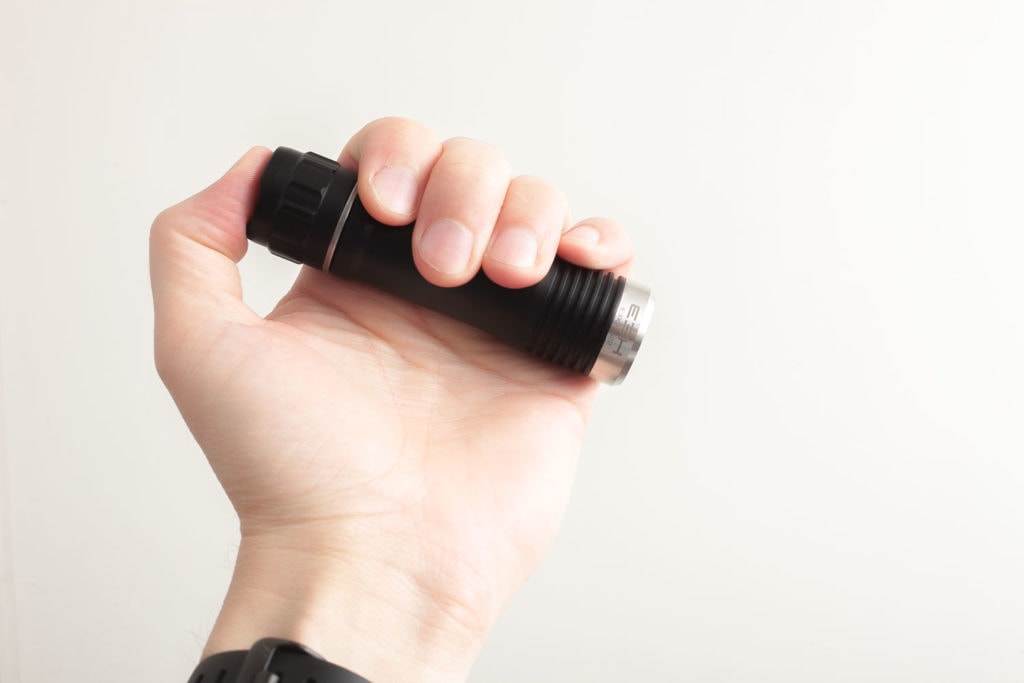
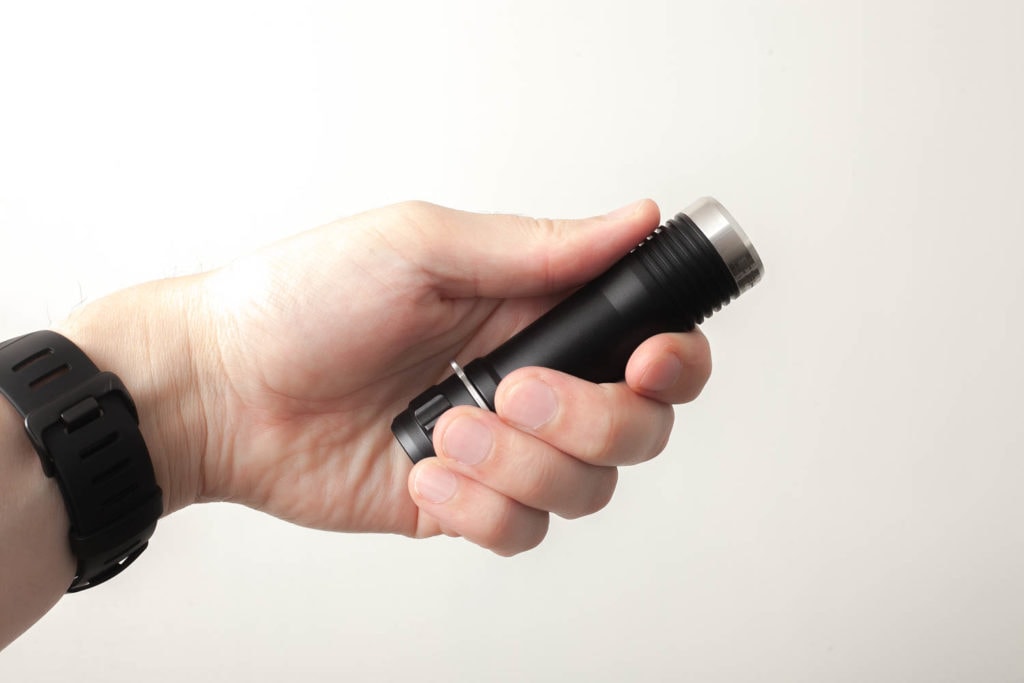
Build Quality, and Warranty
The Amutorch E3H consists of 2 parts. The body (including the head) and the tailcap. Unscrewing the tailcap revealed some chipped/missing anodization, which is a pity. Threads came bone dry, and I don’t mind that, since I can apply my own lube for that. Its design isn’t very exciting either, and I would have liked a bit more attention to detail. It looks a little dull.
The coating is fine, except for the threads.
A white o-ring keeps the lanyard attachment ring in place. I’m not a huge fan of this option, but it’s easy enough to remove it. The ring itself spins freely around, and is likely made of stainless steel.
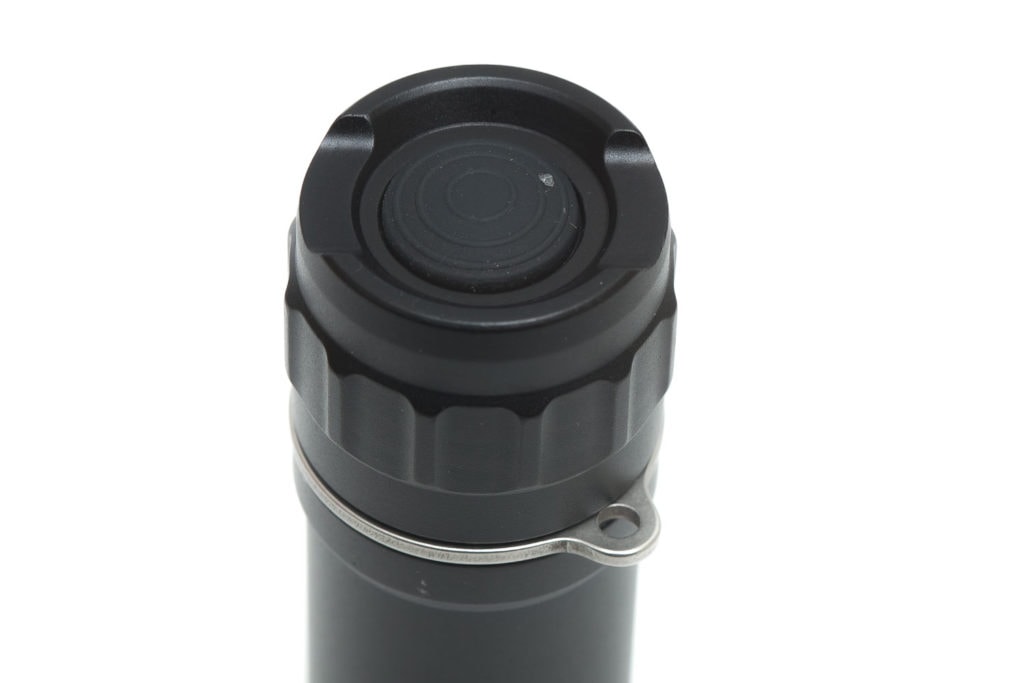
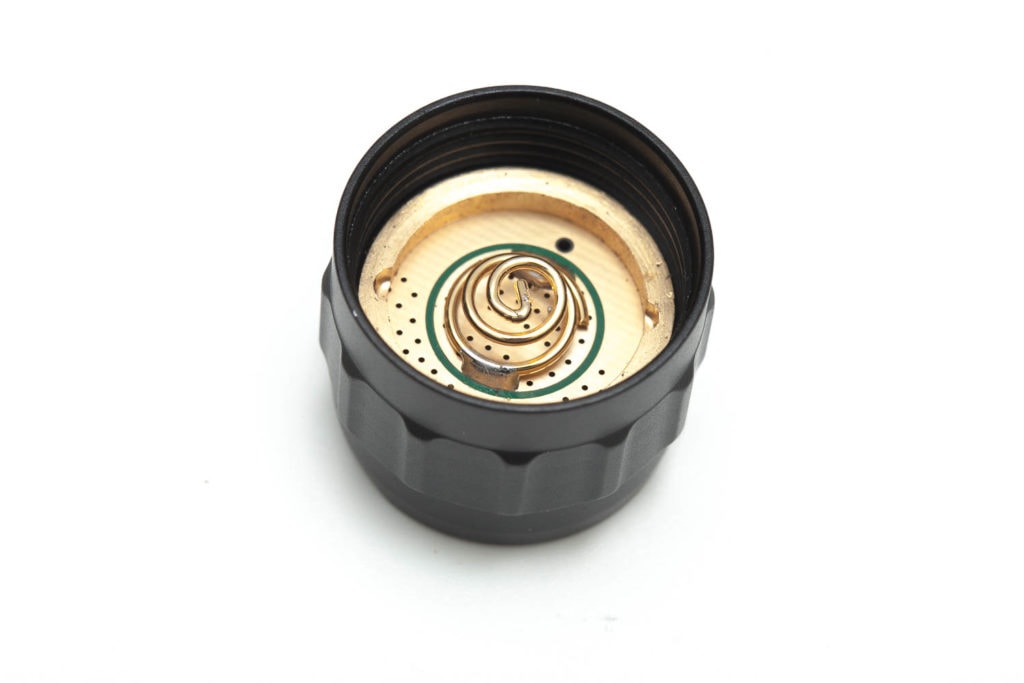
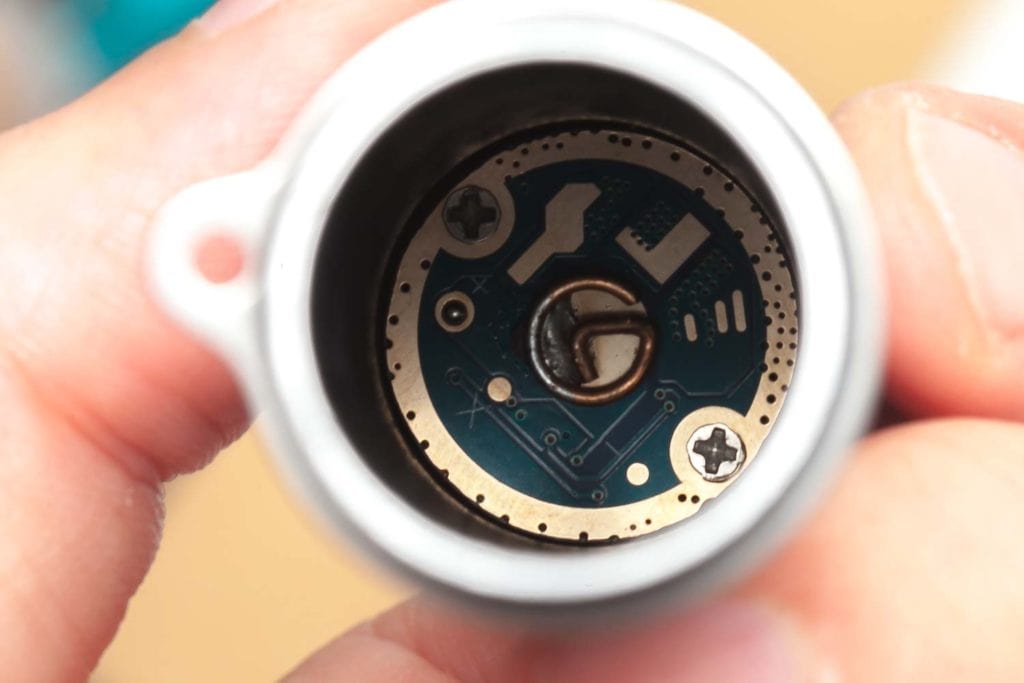
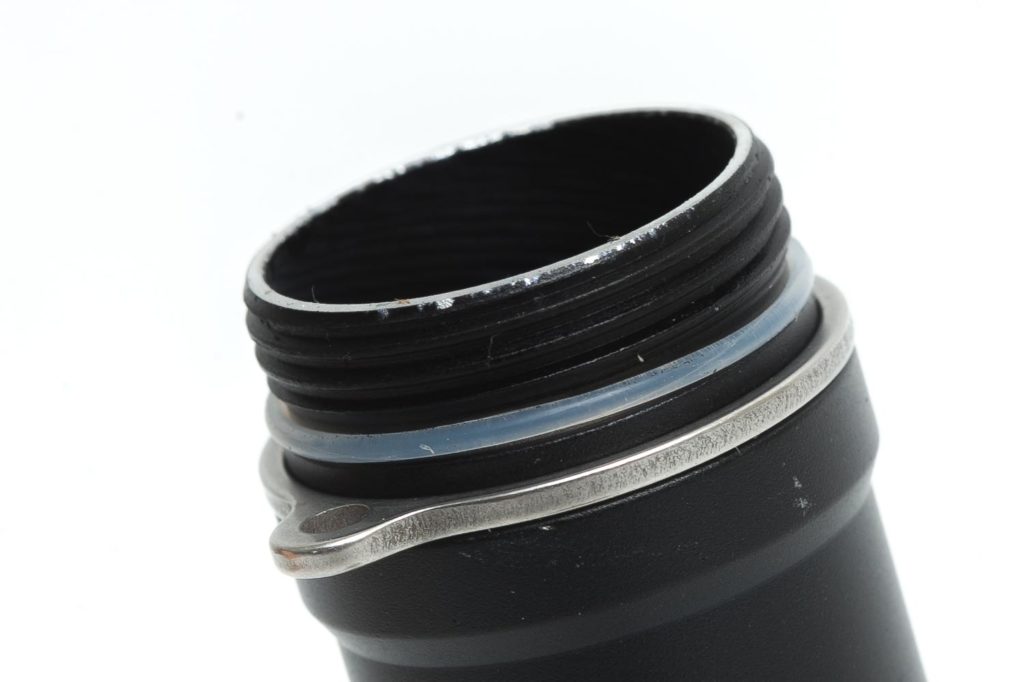
LED, Lens, Bezel, and Reflector
At the business end of the flashlight, you’ll have 3 LEDs behind a clear Carclo TIR optic. Amutorch’s current listing only has 1 LED option: 6500K CREE XPL-HI. Which is kind of strange, because my copy has 3*Luminus SST20 6500K LEDs. I assume they will add more and more options in the future.
Cree XPL- Hi should perform higher than the Luminus SST20 6500K I have, and also throw farther. So all measurements in this article are based upon the Luminus SST20, and not Cree XPL Hi.
The Carclo optics make a nice smooth beam with a large hotspot and a nice smooth transition into the spill, and then into the darkness. The Carclo optics are protected by a glass lens and a stainless steel bezel. The bezel can be removed to give you access to the LEDs in case you ever want to upgrade the LEDs.
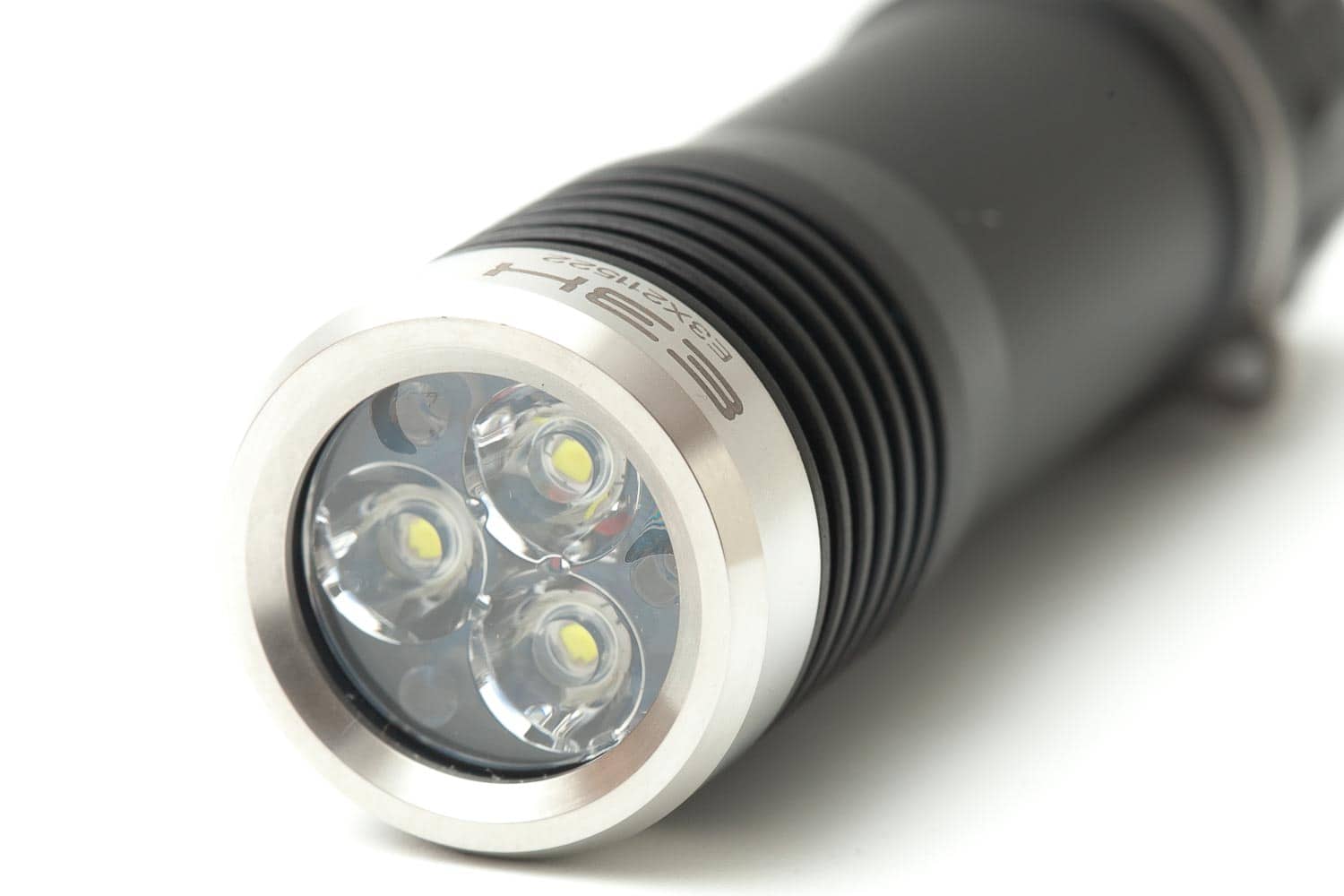
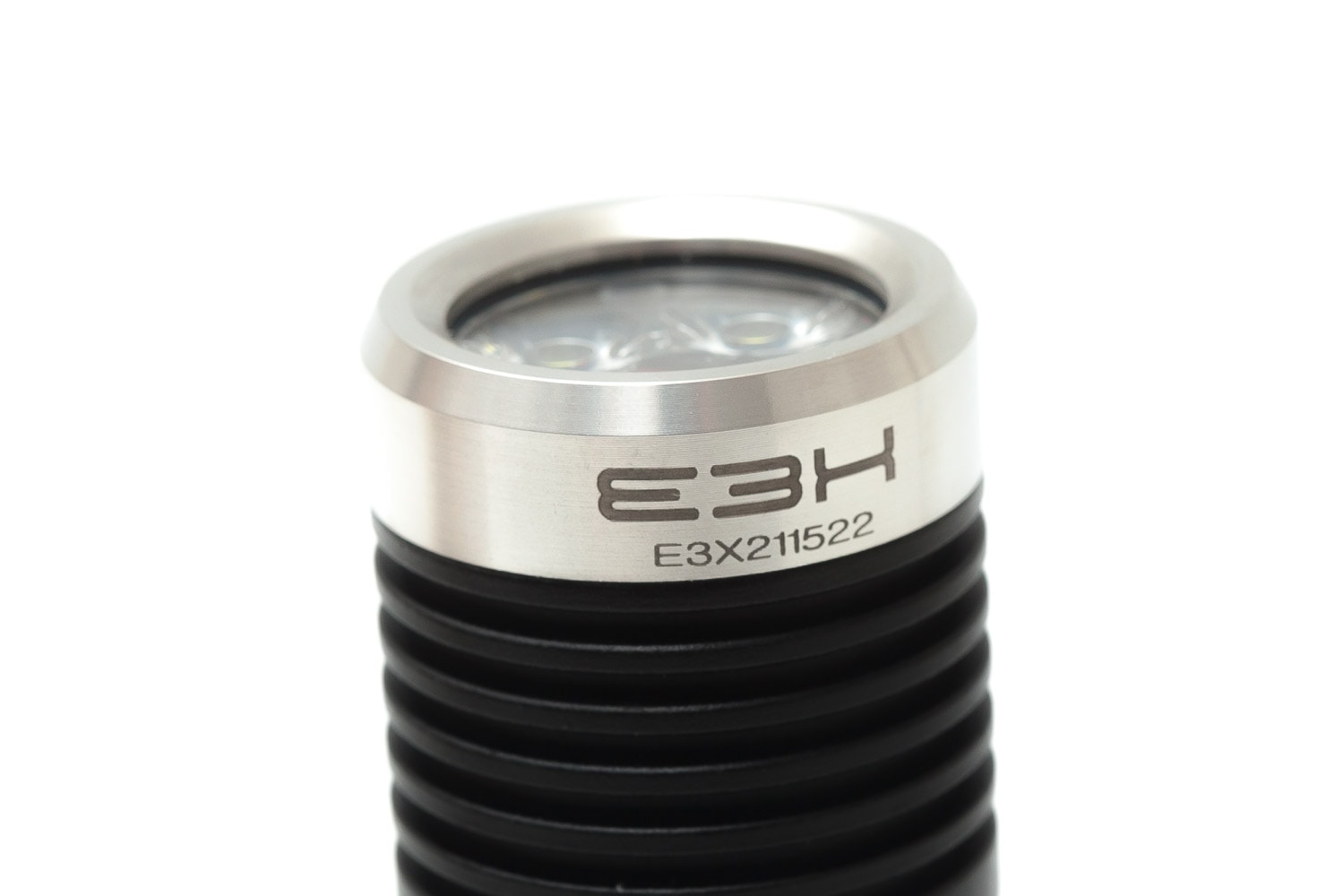
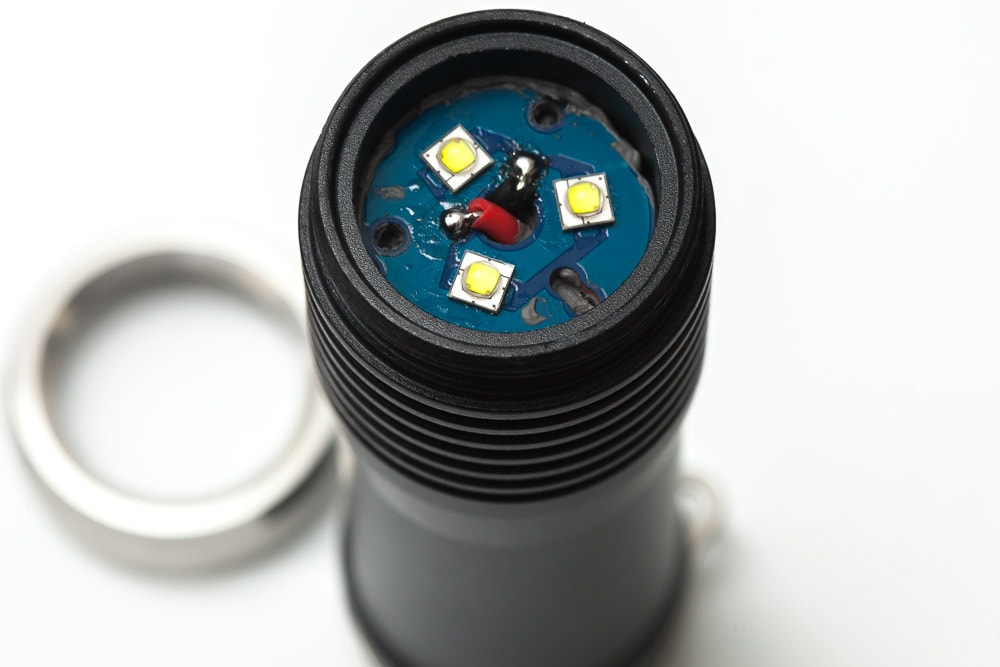
Dimensions and size comparison
- Length: 106.2mm / 4.18″
- Head/bezel diameter: 28mm / 1.1″
- Tailcap diameter max: 28.8mm / 1.1″
- Body diameter: 25.5mm / 1″
Weight:
- Empty: 73.5 g / 2.6oz
- With battery: 142 g / 5oz
EDC Flashlights size comparison
Size compared to other EDC flashlights.
Image 1+2; from left to right: Amutorch E3Q, Amutorch E4, 21700 Amutorch battery, Lumintop EDC AA, Baivic V4+, Amutorch E3H.
Image 3: Amutorch E3Q, 21700 battery, Amutorch E3H.
Image 4: Amutorch E3H, Zebralight SC700d, Lumintop X1L, Fenix E35
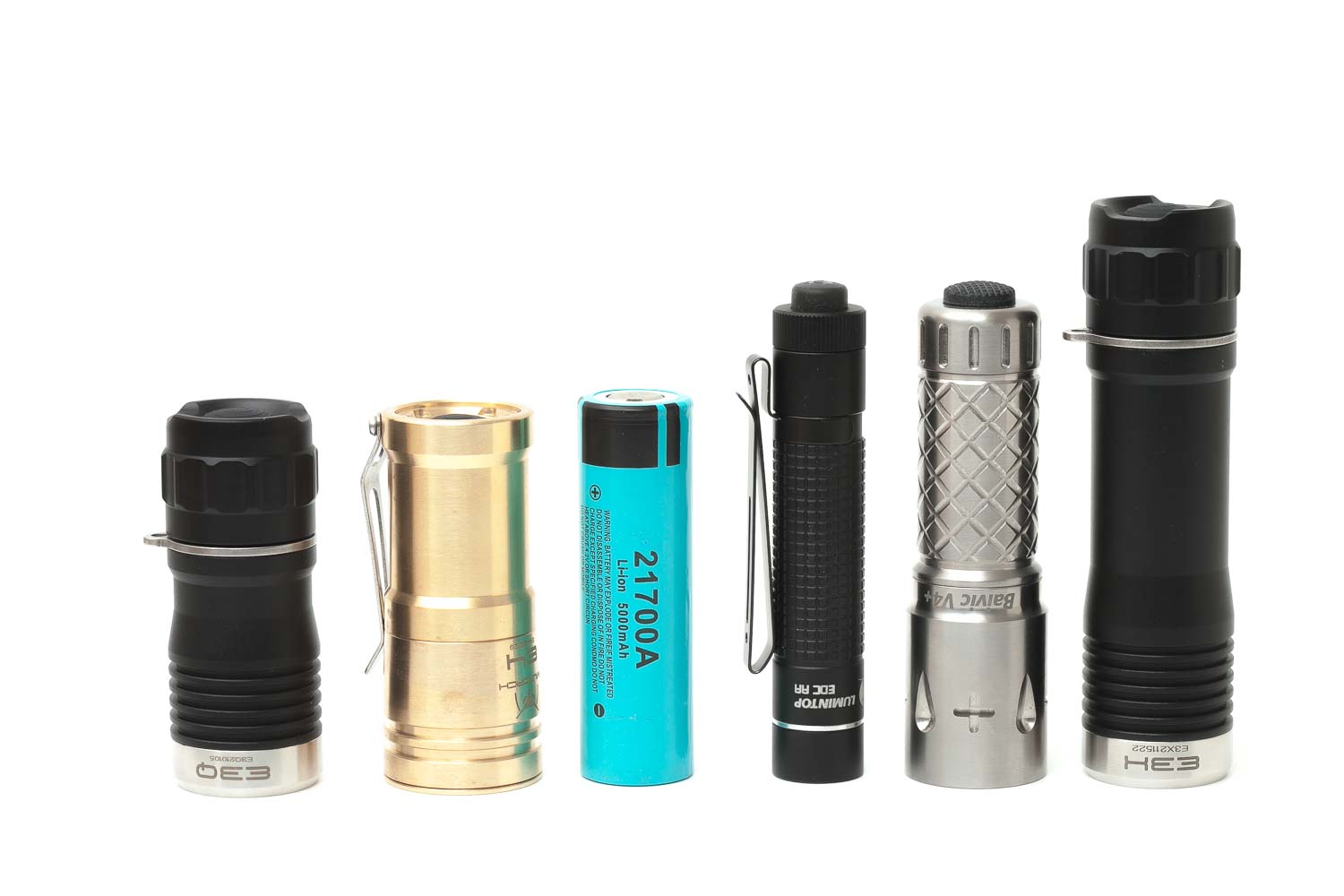
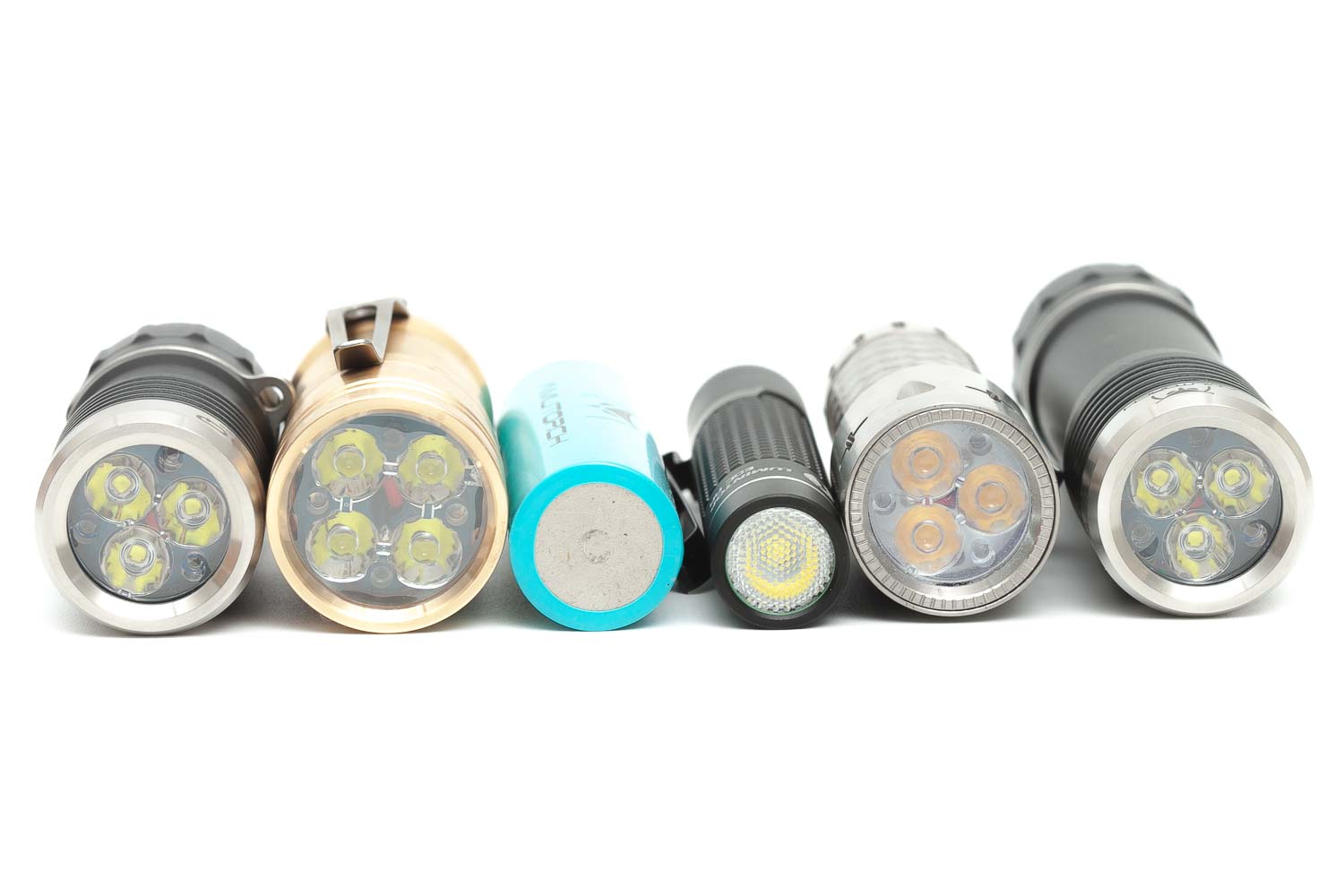

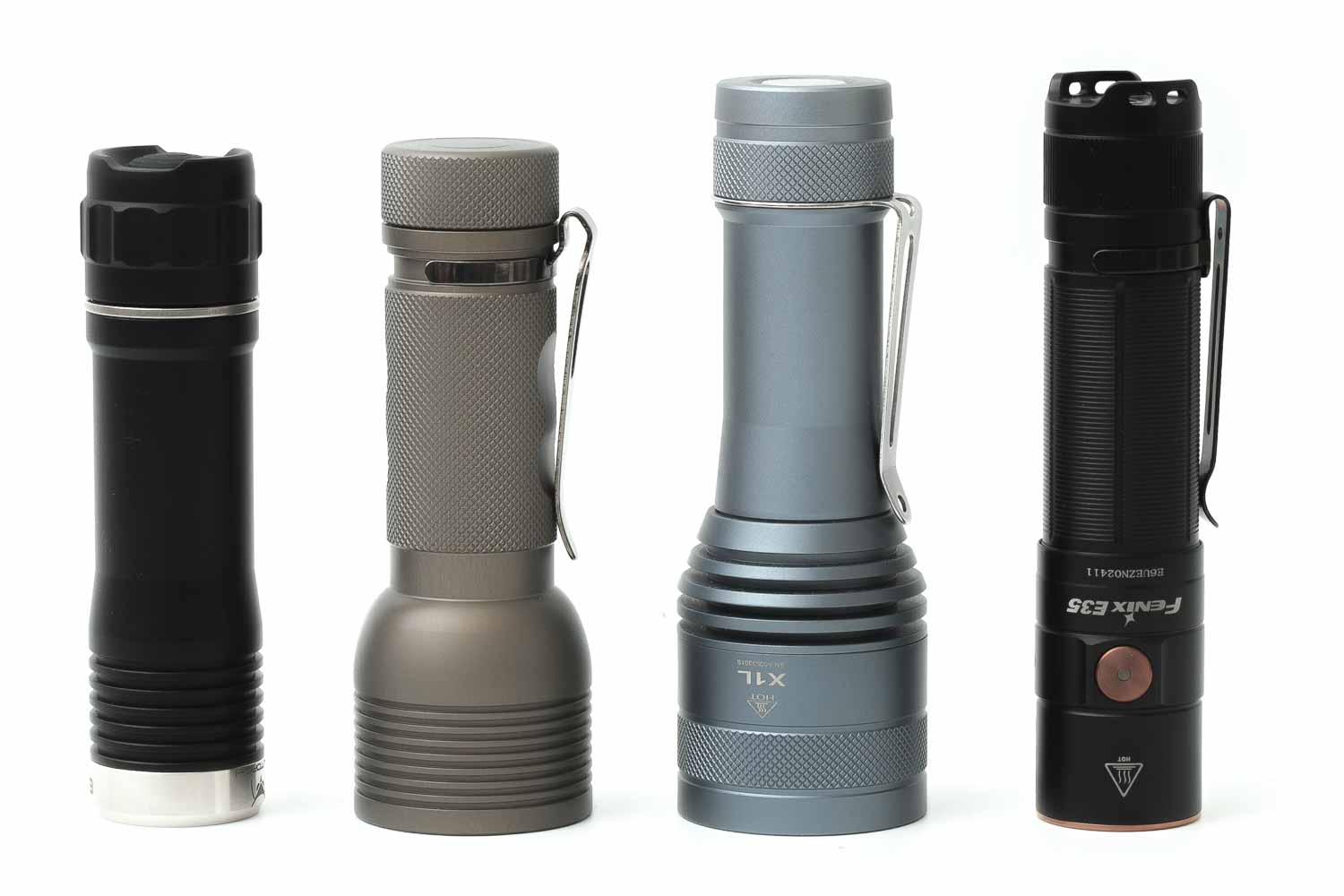
Driver & User Interface:
The Amutorch E3Q uses the same User Interface as the Amutorch E4 and Amutorch E3H (the latter is the same flashlight but with a larger battery tube).
By default, it has 2 modes, Low and Turbo, but you can select your own desired mode group by doing 5 taps when On. It then starts blinking 1 time, 2 times, 3 times, 4 times, 5 times.
When you click the switch, that mode group is memorized.
Mode groups: (Keep in mind that Turbo and Strobe are accessible from all mode groups!!!!
Also, these modes are based on my own copy. The specifications on Amutorch website don’t have an Eco mode.. But mine has the same UI as the E4 and E3Q which both have an Eco mode.
| Mode Group: | Available Modes: |
|---|---|
| Group 1 | 1 mode: High |
| Group 2 | 2 modes: Eco, High |
| Group 3 | 2 modes: Med, High |
| Group 4 | 3 modes: Eco, Med, High |
| Group 5 | 4 modes: Eco, Low, Med, High |
Available modes:
- Eco, Low, Med, High + Turbo
- Hidden strobe
From OFF:
- Half-press: nothing, it’s a reverse clicky switch
- Single-click: (to last used mode, mode memory)
- Double click: off again
From ON:
- Half-press: Cycle through the menu from Low to High
- Single-click: turns off
- Double tap (not click): Turbo
- Triple-tap (not click): Strobe
- 5 taps (not clicks): Programming menu
Shortcuts:
- To Turbo: double click from on
- To Moon: none
- To Strobe: triple click from on
Mode memory:
- Yes
Blinky modes menu:
- You can enter strobe menu when you do 3 quick taps when the flashlight is on. A quick tap will bring you back to the normal modes.
Low battery warning:
- Yes, the light starts blinking when the battery runs low. It will shut off around 3V, which is very conservative.
Lock-out mode:
- Just use the reverse clicky switch
PWM:
- Not visible by eye.
Batteries & Charging
Amutorch included a 21700 battery and the A1 battery charger. It charges lithium-ion batteries at 1A. I’m not into reviewing chargers, so I usually skip tests besides the ‘normal’ usage test, where I just charge the battery and see how much current the charger is using. The battery arrived at 4.13 Volts, so they pre-charged the battery before shipping. Most batteries ship cells at a resting voltage of around 3.4-3.6 Volts.
The charger has a red indicator LED lit during charge, which turns green when it is finished. The charge current does decrease towards the end of the charge, even though the indicator LED already shows a green light that indicates it finished charging. A Micro USB cable for the charger is included.
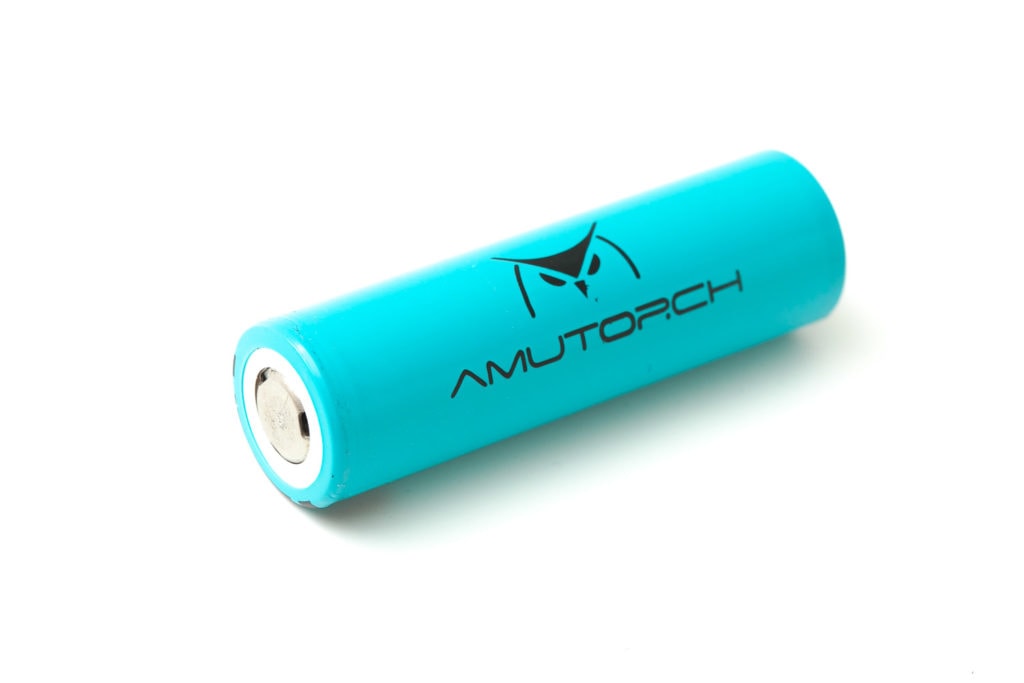
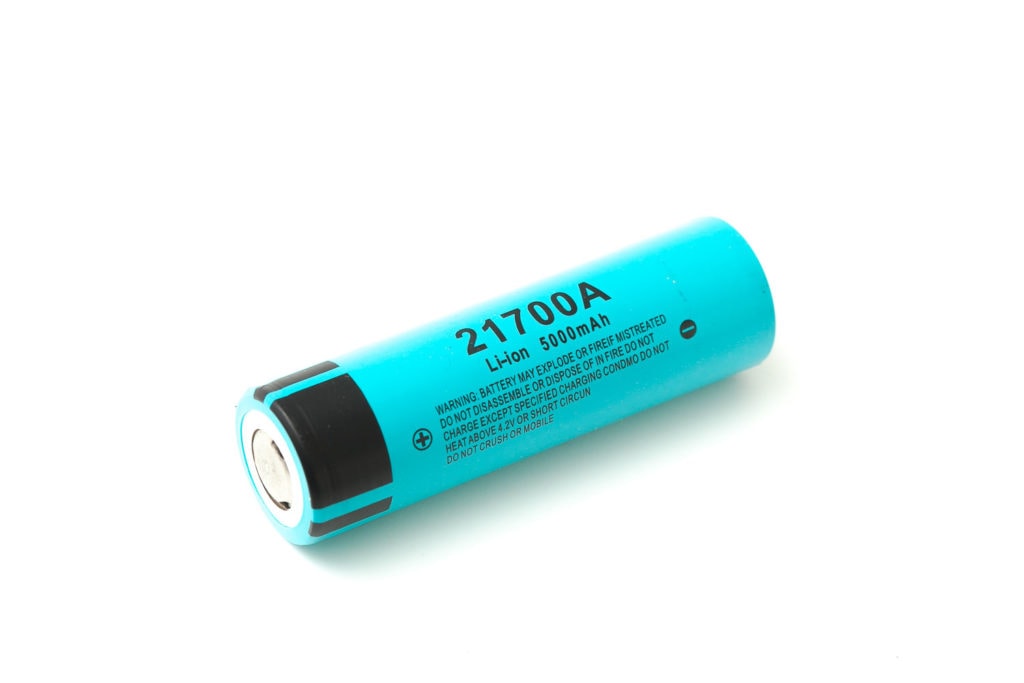
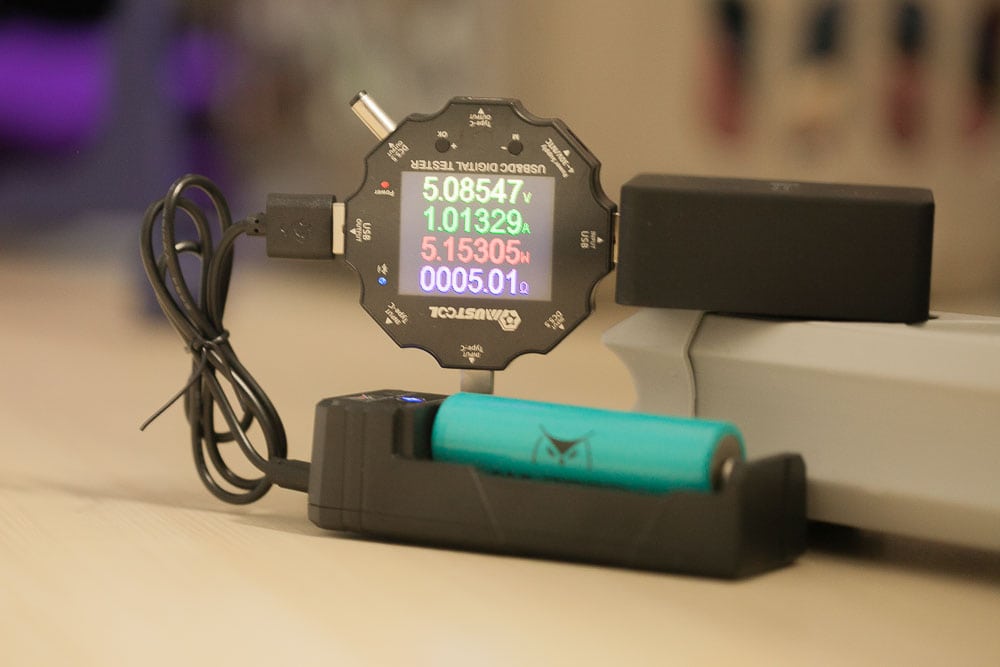
Performance
This is the gear I used for testing:
| Gear | Purpose | Link to buy |
|---|---|---|
| Hagner E4-X | Measuring beam intensity (throw) | Inquire at Hagner.se |
| Extech SDL400 | Lumens and logging runtimes | Amazon.com, Amazon.co.uk, |
| Leica Disto D2 | Distance for throw measurements | Amazon.com, Amazon.co.uk, |
| Uni-T UTi260B | Thermal camera | Amazon.com, |
Lumen measurements:
All output numbers are relative to my homemade Integrating Sphere. It is set up with an Extech SDL400 Lux Meter for measurements including a Kenko PRO1D ND-16 filter. The base measurement is done with a Convoy S2+ that has been tested at 255 lumens.
All of my readings were taken from a fully-charged Amutorch 21700, 5000mAh.
Amps were measured with a Fluke 77III.
Interestingly enough, the Amutorch website doesn’t mention an Eco mode, but calls it Low. I just copied the table from the E3Q review, and added my measurement, including a normal Eco and Low mode.
| Mode | Amps measured | Specs | 10 min | 30sec | start |
|---|---|---|---|---|---|
| Eco | 0.05A | 30 | – | 21.55 | 22.15 |
| Low | 0.35A | 150 | 160 | 160 | 162 |
| Med | 0.70A | 350 | 309 | 311 | 314 |
| High | 1.52A | 700 | 618 | 633 | 635 |
| Turbo | 6.29A | 3000 lm | 623 lm | 2598 lm | 2981 |
My measurements were more in line with the specs this time. Turbo shouldn’t be specced at 3000 lumens, but 2500 lumens, and High shouldn’t be advertised as 700 lumens but 600 lumens. If Amutorch did that, they will become more trustworthy. Keep in mind that the measurement in Turbo is just before the output drops at 30 seconds.
Runtime:
The runtime test was done with the 50cm integrating sphere, including the Kenko Pro1D ND-16 filter and Extech SDL400 data logging Lux Meter.
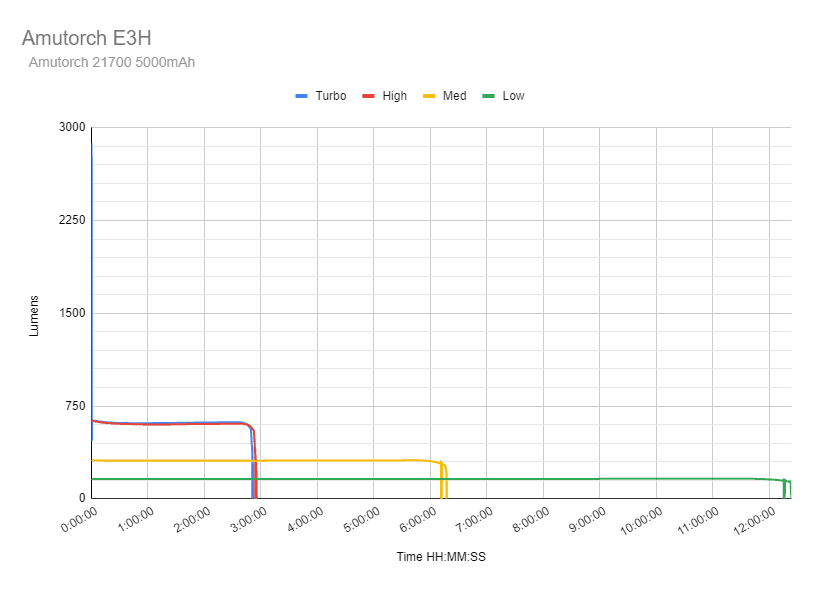
Turbo drops from roughly 2900 lumens to 620 lumens at 30 seconds. Total Turbo runtime is 2 hours and 52 minutes
High starts at around 620 lumens and is pretty stable, and the total runtime for High is 2 hours and 54 minutes
Medium has a pretty stable output as well, and starts blinking at 6 hours and 16 minutes, and turns off at 6 hours and 24 minutes.
Low is also very stable at round 160 lumens. It starts blinking at around 12 hours and 16 minutes, and turns off at 12 hours and 23 minutes.
Eco mode isn’t tested because that would take many days, but if you look at the current draw in Eco mode (0.05A), the battery would deplete in about 100 hours, or more than 4 days.
Turbo is only working for 30 seconds but can be reactivated. Keep in mind that the light gets extremely hot, so it’s very unlikely you will activate Turbo more than just 1 time. Although the manufacturer says it has ‘Intelligent Thermal Control’, that only applies to a time-based controller, and not a temperature controller. The flashlight went up to almost 100 degrees celsius.
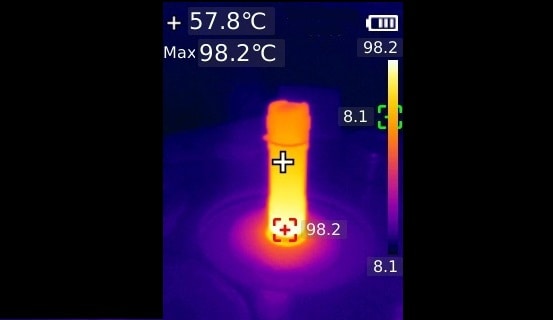
Also, the flashlight starts blinking a few minutes before it will turn off in all modes.
Throw Measurement
Measurements were taken indoors at 5 meters, with a professional Hagner E4-X Lux Meter. (30 seconds)
| Mode | Candela | in Meters | in Yards |
|---|---|---|---|
| Eco | 100 | 20 | 22 |
| Low | 850 | 58 | 64 |
| Med | 1650 | 81 | 89 |
| High | 3400 | 117 | 128 |
| Turbo | 15225 cd | 247 m | 270 yd |
The specs for the E3H are the same as for the E3Q. The only difference between the E3H and E3Q is the battery it uses.
Beamshots
The beamshots are shot with a Canon EOS 5D Mk2 and a 50mm lens. Manual settings: ISO1600, 1/4sec , F4, 5000K
The shed is about 65 meters / 71 yards away, and I waited 1 minute from to do another beamshot to show the difference in brightness. That way you can easily see the difference in Turbo output, which only works for 30 seconds.
The beamshots taken after 1 minutes are labeled with 60sec. You can easily notice the difference before and after the output drop.
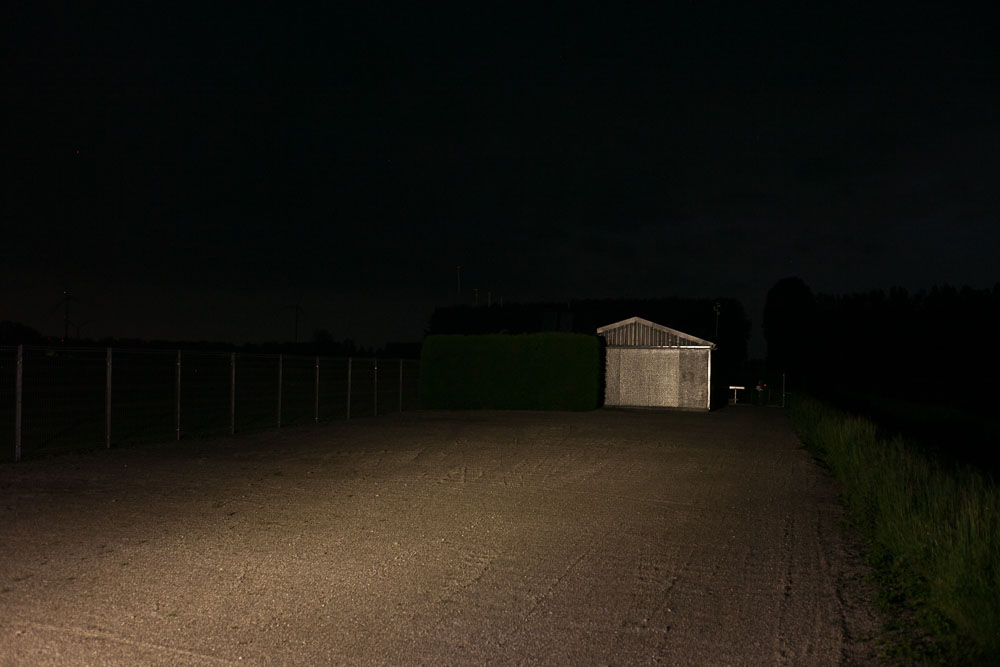
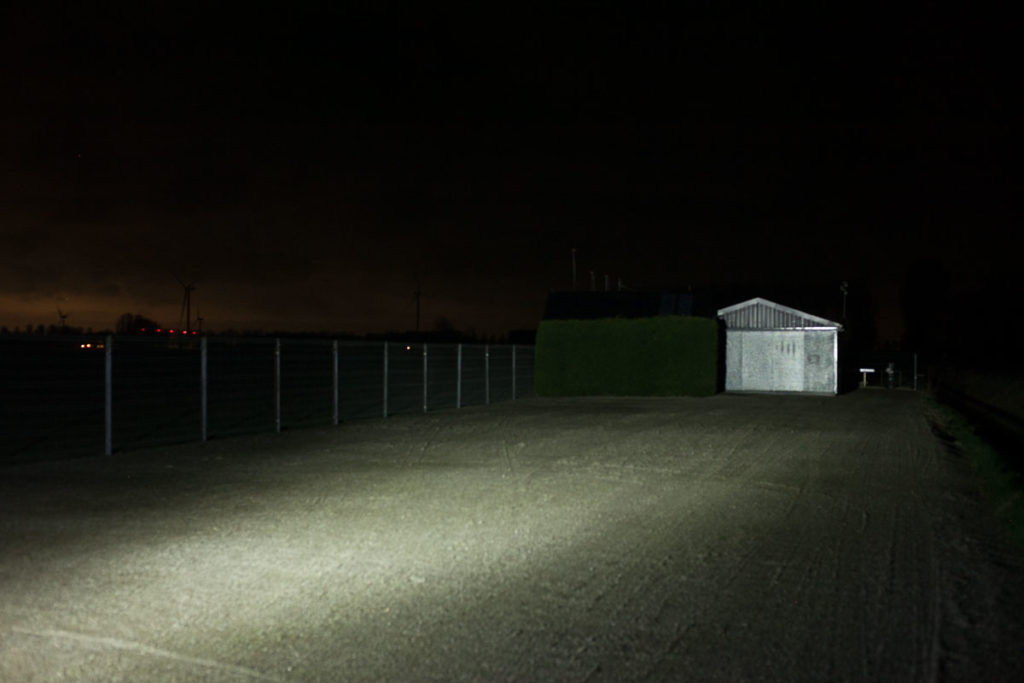
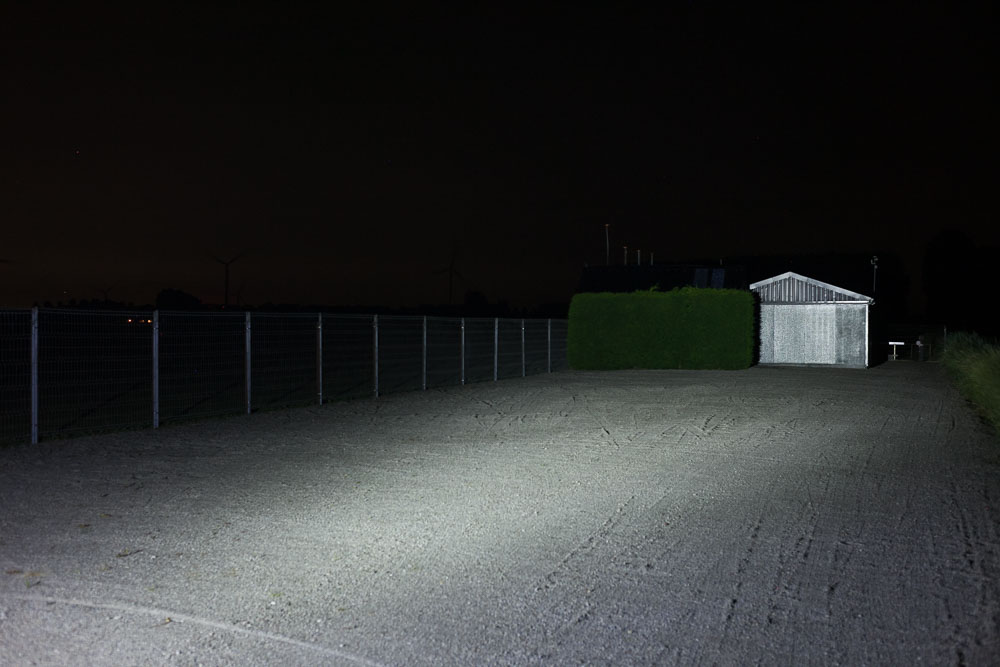
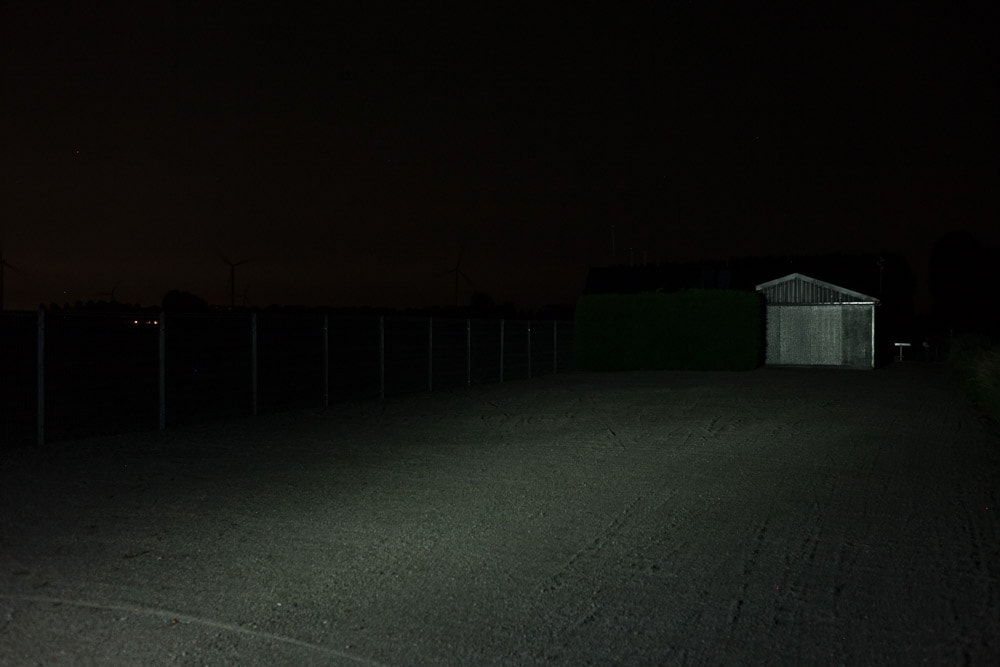
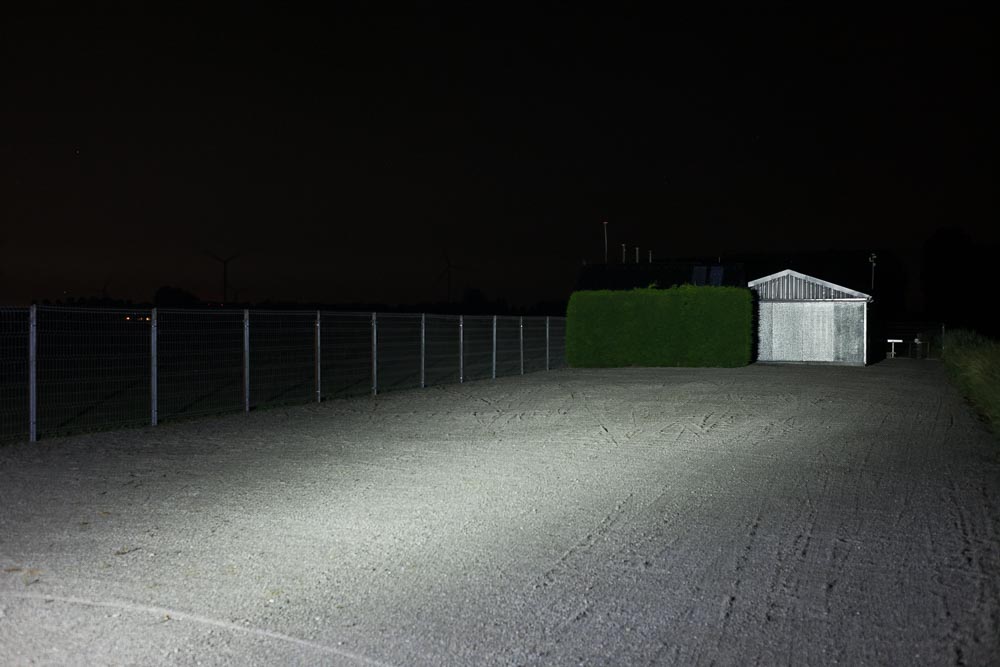
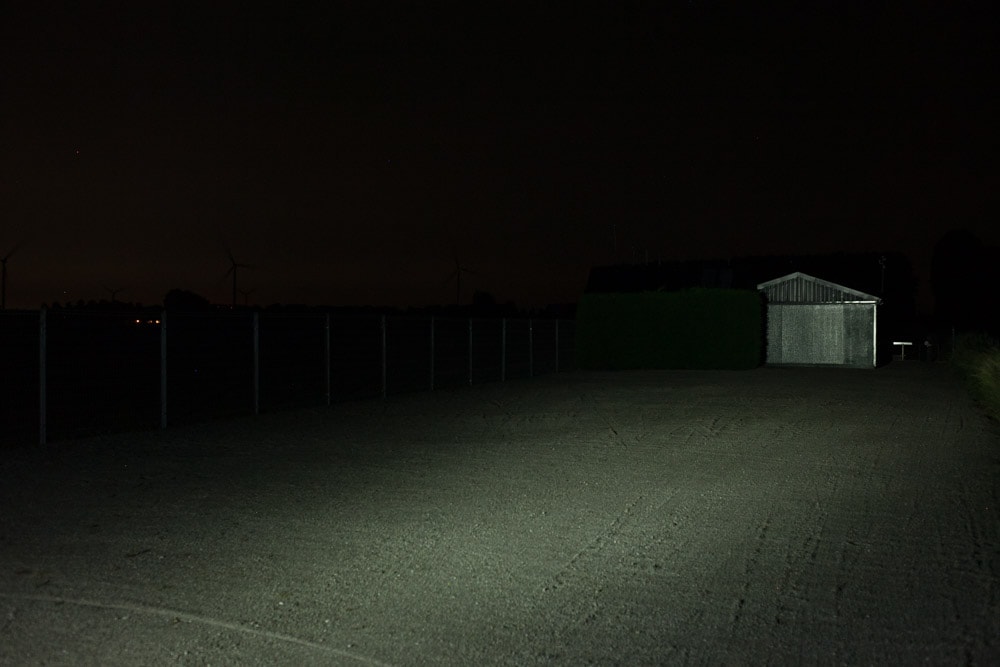
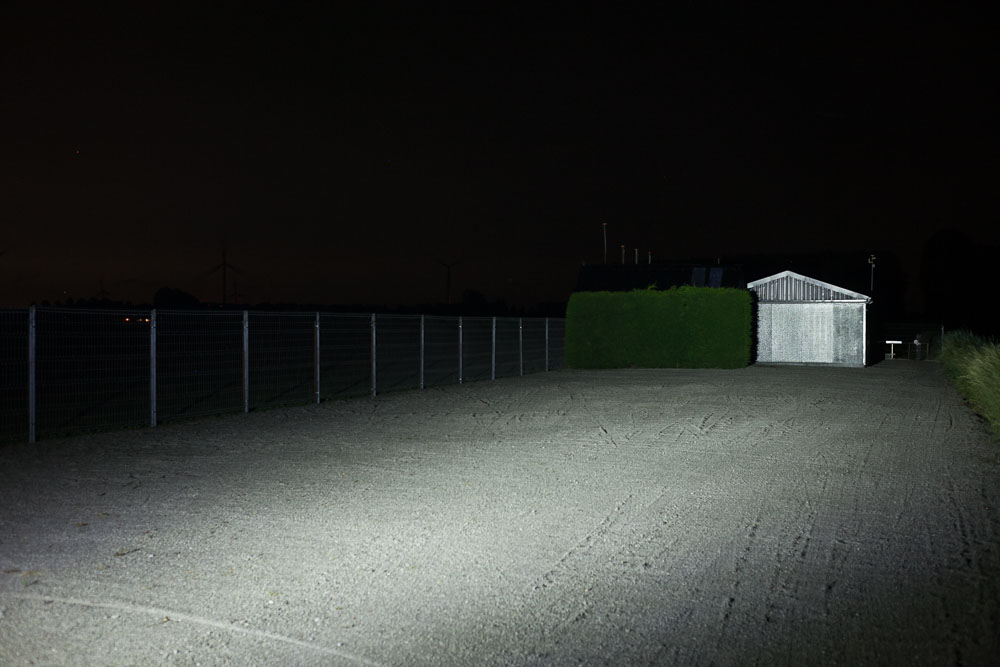
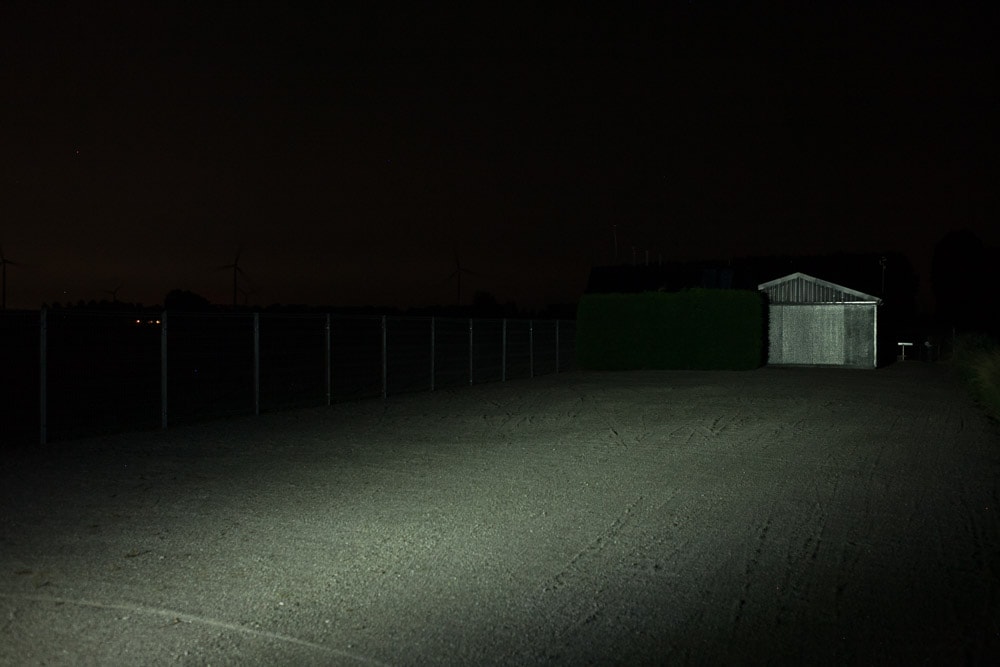
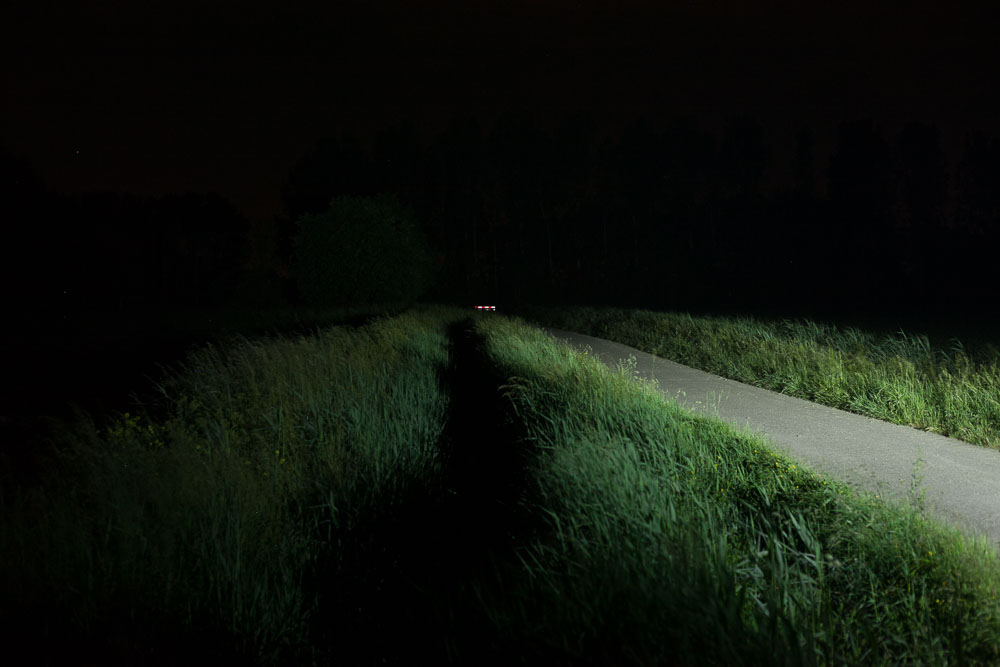
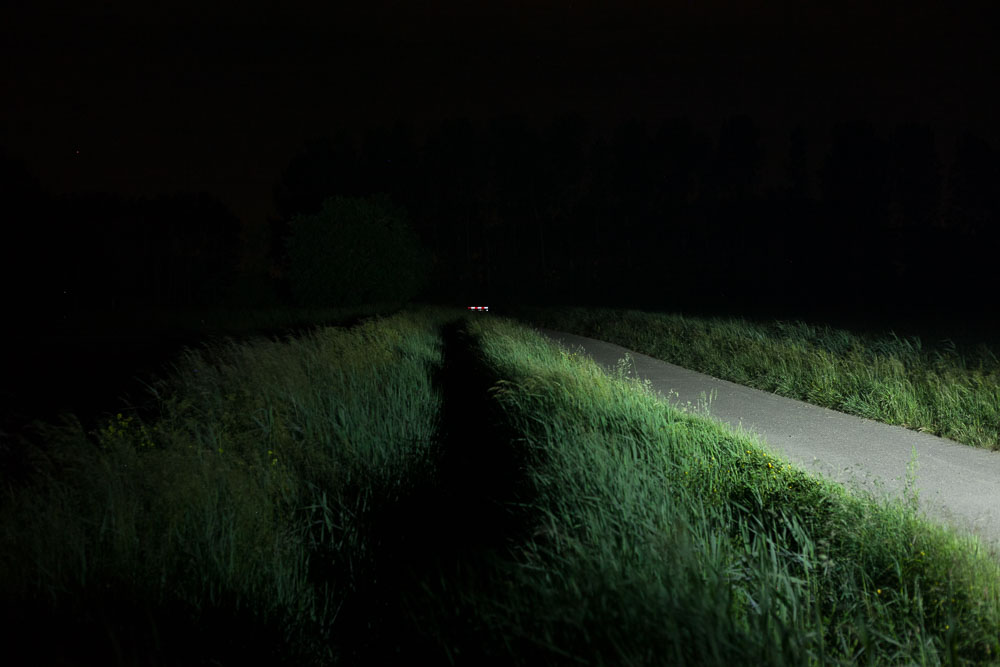
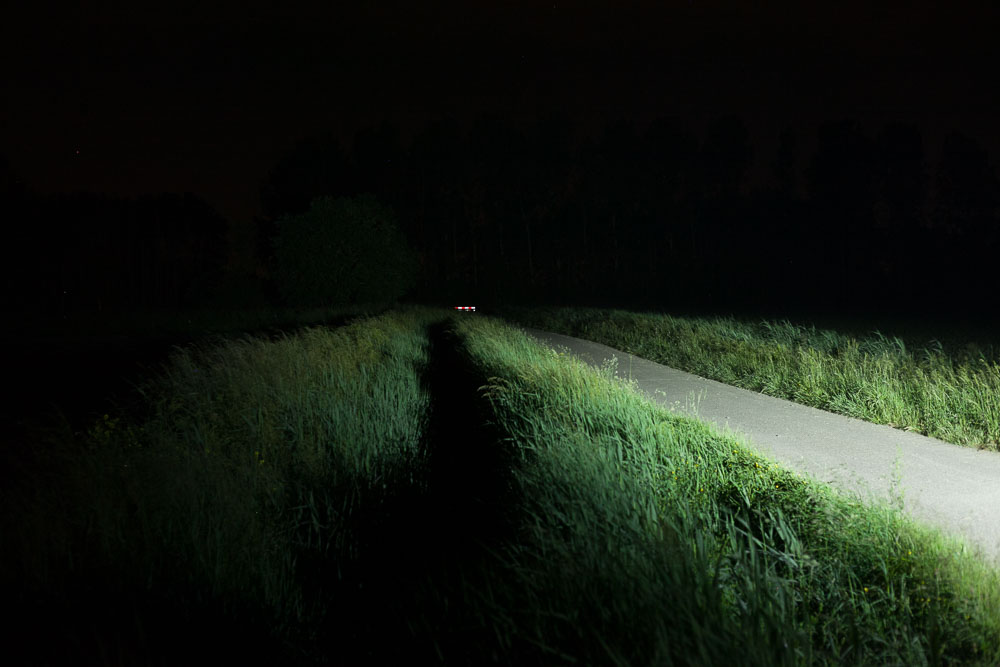
Disclaimer: This flashlight was sent to me for review at no cost by Amutorch. I have not been paid to review, nor have I been holding back on problems or defects.
Final Verdict
Pros
- Very small
- Blinks when the battery runs low
- Smooth beam
- Plenty bright for such a small light
Cons
- Dull design
- Thermal management is nothing more than a 30-sec timer
- Not reaching the claimed output
- No manual included in the box
Explanation on star ratings:
1: Avoid: my phone flashlight would be a better choice – 2: Poor: significant defect or issues, much better options available at the same price – 3: Average: some defects or issues – 4: Good: recommended (minor issues) – 5: Great: highly recommended

4.0 stars: ★★★★★
The Amutorch E3H is a compact 21700 EDC flashlight. In terms of performance, the E3H is not a bad flashlight, but you shouldn’t keep reactivating Turbo because the flashlight might have a meltdown. Just use the flashlight wisely, and you’ll have a nice, 21700 EDC flashlight.
Amutorch E3H for sale:
1lumen selects and reviews products personally. We may earn affiliate commissions through our links, which help support our testing.